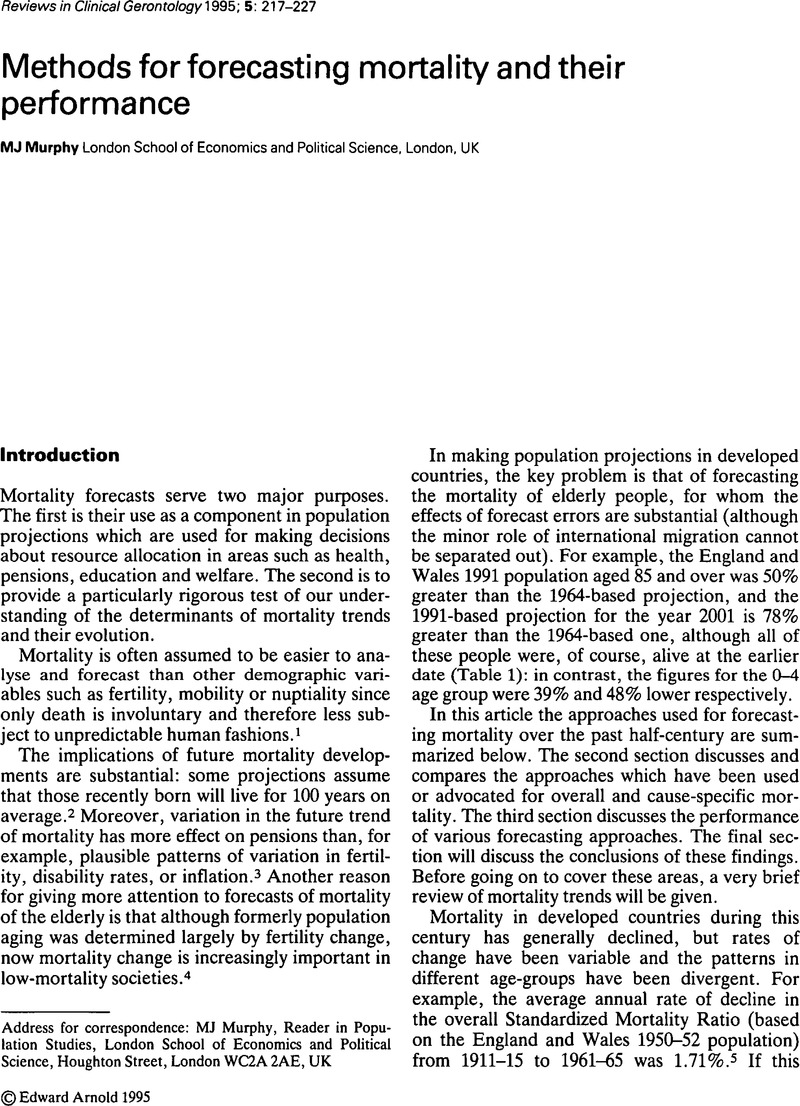Crossref Citations
This article has been cited by the following publications. This list is generated based on data provided by Crossref.
Murphy, M.J.
1995.
The Prospect of Mortality: England and Wales and the United States of America, 1962–1989.
British Actuarial Journal,
Vol. 1,
Issue. 2,
p.
331.
GRUNDY, E.
and
BOWLING, A.
1999.
Enhancing the quality of extended life years. Identification of the oldest old with a very good and very poor quality of life.
Aging & Mental Health,
Vol. 3,
Issue. 3,
p.
199.
Wang, Duolao
and
Lu, Pengjun
2005.
Modelling and forecasting mortality distributions in England and Wales using the Lee–Carter model.
Journal of Applied Statistics,
Vol. 32,
Issue. 9,
p.
873.
Terblanche, Wilma
2015.
Alternative state and national projections of Australia’s very elderly population.
Journal of Population Research,
Vol. 32,
Issue. 3-4,
p.
187.



